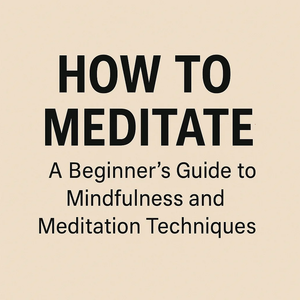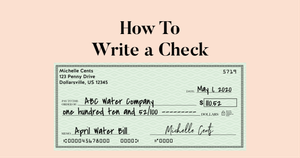
How to Meditate: A Beginner’s Guide to Mindfulness and Meditation Techniques
Meditation is a simple yet powerful practice for reducing stress and improving mental clarity ( Meditation: Take a stress-reduction break wherever you are - Mayo Clinic ) (Mindfulness Meditation: Definition, Benefits, and How to Practice). By learning how to meditate, you can cultivate inner peace, focus, and well-being in your daily life. Meditation has been studied extensively: research shows mindfulness meditation can lower stress, anxiety, and depression symptoms (Mindfulness Meditation: Definition, Benefits, and How to Practice) ( Meditation: Take a stress-reduction break wherever you are - Mayo Clinic ). Even a few minutes of practice each day can promote calm and balance ( Meditation: Take a stress-reduction break wherever you are - Mayo Clinic ) (Mindfulness Meditation: Definition, Benefits, and How to Practice).
Learning to meditate doesn’t require any special equipment or experience. You can practice anywhere – at home, at your desk, or even on a quiet walk ( Meditation: Take a stress-reduction break wherever you are - Mayo Clinic ). The key is setting aside a few minutes and following some basic steps. This article explains how to start meditating, highlights the benefits of meditation, and offers both beginner-friendly instructions and advanced tips to deepen your practice.
What is Meditation?
Meditation is a mind-body practice that involves focusing your attention and eliminating the stream of jumbled thoughts that may be crowding your mind ( Meditation: Take a stress-reduction break wherever you are - Mayo Clinic ). Originally used for spiritual purposes, meditation today is commonly practiced to relax and reduce stress. During meditation, you might focus on your breathing, a mantra, or simple awareness of the present moment ( Meditation: Take a stress-reduction break wherever you are - Mayo Clinic ) ( Meditation: Take a stress-reduction break wherever you are - Mayo Clinic ). Over time, meditation trains you to stay centered and calm even amid daily challenges ( Meditation: Take a stress-reduction break wherever you are - Mayo Clinic ).
Benefits of Meditation
Meditation can give you a sense of calm, peace, and balance, benefiting both your emotional well-being and overall health ( Meditation: Take a stress-reduction break wherever you are - Mayo Clinic ). Research links regular meditation to reduced stress, anxiety, and depression symptoms (Mindfulness Meditation: Definition, Benefits, and How to Practice) ( Meditation: Take a stress-reduction break wherever you are - Mayo Clinic ). It can also foster greater self-awareness and patience, and help you manage difficult emotions. Physically, mindfulness meditation has been shown to lower blood pressure and heart rate (Mindfulness Meditation: Definition, Benefits, and How to Practice), improve sleep quality (Mindfulness Meditation: Definition, Benefits, and How to Practice), and even boost immune function (Mindfulness Meditation: Definition, Benefits, and How to Practice). Some studies suggest that consistent meditation practice for 8 weeks can lead to measurable changes in the brain, improving focus and resilience (Mindfulness Meditation: Definition, Benefits, and How to Practice).
Key Benefits of Meditation include:
Reducing stress and anxiety, helping you feel more relaxed (Mindfulness Meditation: Definition, Benefits, and How to Practice) ( Meditation: Take a stress-reduction break wherever you are - Mayo Clinic ).
Improving focus and clarity by training attention on the present moment ( Meditation: Take a stress-reduction break wherever you are - Mayo Clinic ) ( Meditation: Take a stress-reduction break wherever you are - Mayo Clinic ).
Enhancing emotional well-being, giving you new ways to cope with challenging thoughts ( Meditation: Take a stress-reduction break wherever you are - Mayo Clinic ) (Mindfulness Meditation: Definition, Benefits, and How to Practice).
Lowering resting heart rate and blood pressure, which benefits cardiovascular health ( Meditation: Take a stress-reduction break wherever you are - Mayo Clinic ) (Mindfulness Meditation: Definition, Benefits, and How to Practice).
Promoting better sleep and overall physical health ( Meditation: Take a stress-reduction break wherever you are - Mayo Clinic ) (Mindfulness Meditation: Definition, Benefits, and How to Practice).
Each of these outcomes comes from the regular practice of being mindful and centered, which meditation techniques teach ( Meditation: Take a stress-reduction break wherever you are - Mayo Clinic ) (Mindfulness Meditation: Definition, Benefits, and How to Practice).
How to Meditate: A Step-by-Step Guide
Starting to meditate is easier than you might think. Follow these steps to begin:
Find a Quiet, Comfortable Spot. Sit or lie down in a calm place with minimal distractions (Mindfulness Meditation: Definition, Benefits, and How to Practice) ( Meditation: Take a stress-reduction break wherever you are - Mayo Clinic ). Keep your back straight but not rigid. You can meditate on a chair, cushion, or even on a park bench; the important part is that you feel stable and at ease.
Set a Time Limit. Especially for beginners, aim for 5–10 minutes at first (Mindfulness Meditation: Definition, Benefits, and How to Practice). You can use a gentle alarm or timer app so you don’t have to watch the clock (Mindfulness Meditation: Definition, Benefits, and How to Practice). Even a short daily session can be beneficial (Mindfulness Meditation: Definition, Benefits, and How to Practice).
Focus on Your Breath. Close or soften your eyes and breathe naturally. Notice the sensation of air entering and leaving your nostrils or the rise and fall of your belly (Mindfulness Meditation: Definition, Benefits, and How to Practice). Let your breath be an “anchor” for your attention (Mindfulness Meditation: Definition, Benefits, and How to Practice).
Notice When Your Mind Wanders. It’s normal for thoughts, worries, or feelings to pop up. Instead of battling them, simply observe them without judgment and let them pass like clouds drifting by (Mindfulness Meditation: Definition, Benefits, and How to Practice). When you realize your mind has wandered, gently return your attention to your breath.
Be Kind to Yourself. The goal isn’t to have a completely blank mind. Each time you bring your focus back, you’re strengthening your attention. If you get carried away by thoughts or feelings, just notice it, shrug it off, and resume watching your breathing (Mindfulness Meditation: Definition, Benefits, and How to Practice) (Mindfulness Meditation: Definition, Benefits, and How to Practice). This gentle refocusing is the practice of meditation.
End Gradually. When your time is up, open your eyes slowly. Take a moment to notice how you feel—your body, mind, and surroundings. Carry this sense of calm or awareness with you as you continue your day.
Meditation is like training a muscle: the more consistently you practice, the stronger your focus and calm become ( Meditation: Take a stress-reduction break wherever you are - Mayo Clinic ) (Mindfulness Meditation: Definition, Benefits, and How to Practice). Use mindfulness apps or guided sessions if it helps you stay on track, especially in the beginning (Mindfulness Meditation: Definition, Benefits, and How to Practice).
Popular Meditation Techniques
There are many meditation techniques to explore once you get started. Here are a few common ones:
Mindfulness Meditation: Involves staying present and aware of your thoughts, feelings, and sensations without judgment ( Meditation: Take a stress-reduction break wherever you are - Mayo Clinic ). Often you focus on breathing or bodily sensations to stay grounded in the moment ( Meditation: Take a stress-reduction break wherever you are - Mayo Clinic ).
Guided Meditation: You listen to a teacher or recording that leads you through a visual scene or relaxation process ( Meditation: Take a stress-reduction break wherever you are - Mayo Clinic ). This can be helpful for beginners who need structure.
Mantra Meditation: You silently repeat a calming word, phrase, or sound (such as “Om”) to quiet your mind ( Meditation: Take a stress-reduction break wherever you are - Mayo Clinic ).
Movement Meditation: Practices like Yoga, Tai Chi, or Qigong combine gentle movements with deep breathing to help focus the mind ( Meditation: Take a stress-reduction break wherever you are - Mayo Clinic ).
Loving-Kindness Meditation (Metta): You cultivate feelings of compassion by silently repeating phrases like “May I be happy, may I be safe,” and extending those wishes to others.
Body Scan: You mentally scan your body from head to toe, noticing and relaxing each area. This improves body awareness and relaxation.
There’s no single “right” technique; what matters is finding one that feels comfortable and helpful. Feel free to try different styles to see what resonates with you ( Meditation: Take a stress-reduction break wherever you are - Mayo Clinic ).
Advanced Tips to Deepen Your Practice
Once you’ve mastered the basics, use these tips to strengthen and deepen your meditation:
Increase Duration and Frequency: Gradually extend your sessions from 5 minutes to 20 or 30 minutes. Research suggests even meditating 3–4 times a week can change your brain and improve well-being over time (Mindfulness Meditation: Definition, Benefits, and How to Practice) (Mindfulness Meditation: Definition, Benefits, and How to Practice).
Establish a Routine: Meditate at the same time each day—morning or evening often works well—to build it into a habit. Consistency is key for long-term benefits.
Use Reminders Throughout the Day: Try mini-meditations (even just a few deep breaths) whenever you’re standing in line or feeling stressed ( Meditation: Take a stress-reduction break wherever you are - Mayo Clinic ) ( Meditation: Take a stress-reduction break wherever you are - Mayo Clinic ). Over time, mindfulness off the cushion can enhance your daily life.
Explore Guided Courses: Programs like Mindfulness-Based Stress Reduction (MBSR) or meditation apps (Calm, Headspace, etc.) can introduce structured practices and community support.
Keep a Meditation Journal: After meditating, jot down any insights or how you feel. This reflection can motivate you and highlight progress.
Practice Mindfulness in Activities: Turn routine tasks—eating, walking, washing dishes—into “meditations in motion” by focusing fully on each action.
Remember, even seasoned meditators continue to struggle with distractions. The challenge of gently returning your focus is part of deepening the practice. Over time, meditation can become more effortless and rewarding.
Frequently Asked Questions
Q: What is the best time to meditate?
A: The "best" time is whenever you can be consistent. Many people prefer early morning, when the mind is quiet, or evening to unwind. However, any calm moment—even a short midday break—is beneficial ( Meditation: Take a stress-reduction break wherever you are - Mayo Clinic ) ( Meditation: Take a stress-reduction break wherever you are - Mayo Clinic ). Experiment and see what fits your schedule.
Q: How long should I meditate?
A: Beginners can start with just 5 minutes. Even a brief session each day can be effective (Mindfulness Meditation: Definition, Benefits, and How to Practice). As you get comfortable, gradually increase to 15–20 minutes or more. The quality of attention matters more than duration; regular practice of a few minutes is better than occasional long sessions (Mindfulness Meditation: Definition, Benefits, and How to Practice) ( Meditation: Take a stress-reduction break wherever you are - Mayo Clinic ).
Q: What if I can’t stop thinking?
A: It’s completely normal for thoughts to wander during meditation. Instead of fighting them, simply notice them without judgment and gently bring your focus back to your breath or chosen anchor (Mindfulness Meditation: Definition, Benefits, and How to Practice) (Mindfulness Meditation: Definition, Benefits, and How to Practice). Each time you do this, you're training your mind like a muscle to focus.
Q: Can I meditate if I’m not religious?
A: Absolutely. Meditation is a secular practice for most people. It does not require belief in any religion or philosophy. It's simply about training attention and awareness to improve well-being ( Meditation: Take a stress-reduction break wherever you are - Mayo Clinic ) ( Meditation: Take a stress-reduction break wherever you are - Mayo Clinic ).
Q: Is meditation guaranteed to help?
A: Meditation has many proven benefits, but it’s not a miracle cure. Individual experiences vary. Some scientific studies show strong effects for stress and anxiety relief (Mindfulness Meditation: Definition, Benefits, and How to Practice) ( Meditation: Take a stress-reduction break wherever you are - Mayo Clinic ), but it often works best as a regular habit combined with healthy lifestyle choices.
By following this guide, you’ll learn how to meditate safely and effectively. With patience and practice, meditation can become a valuable tool for peace, focus, and personal growth. Good luck on your meditation journey!



